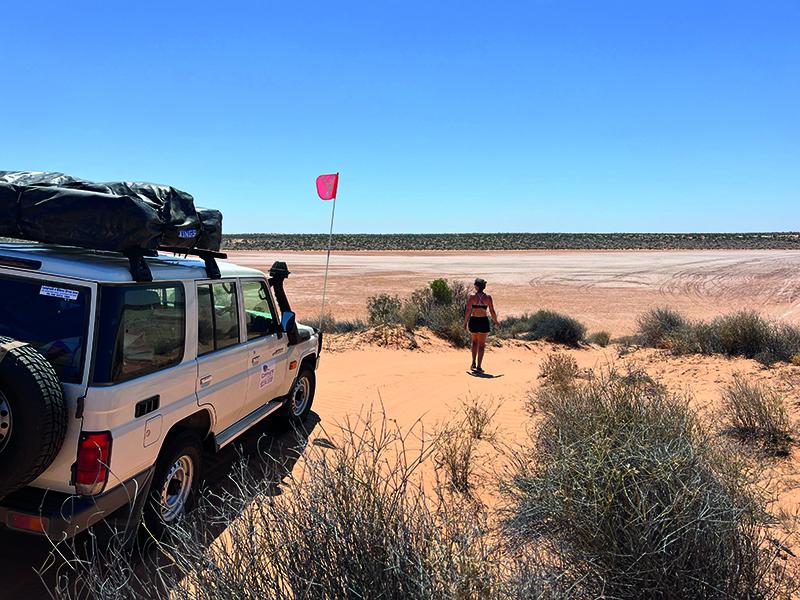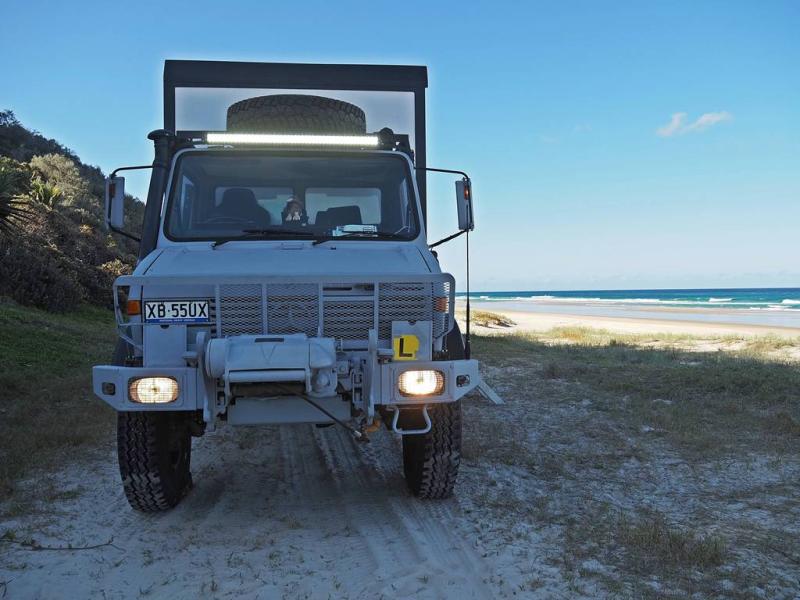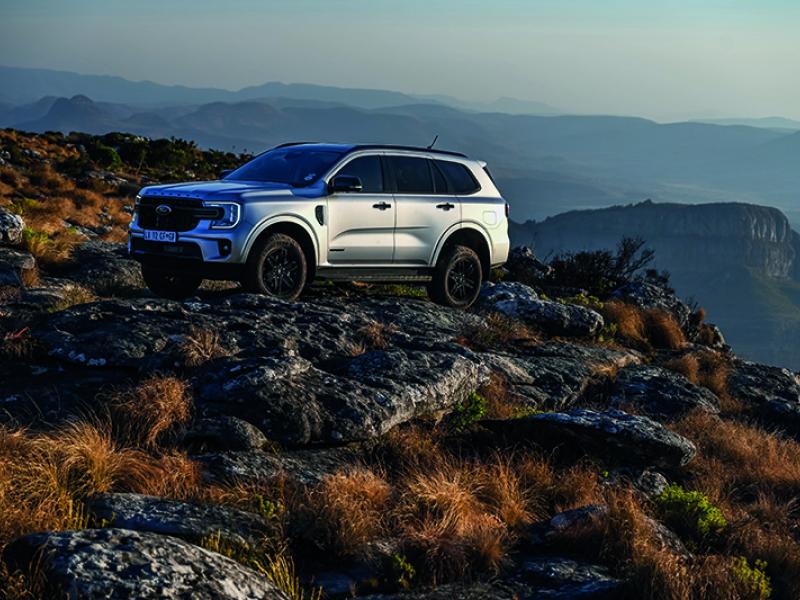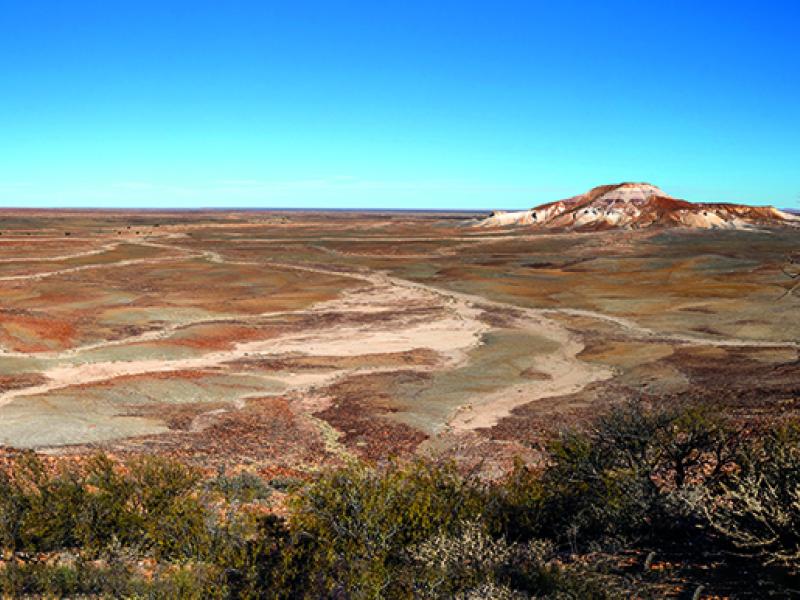After packing and securing our load ready for sand dune country, we left the metropolis of Oodnadatta heading towards Pedirka’s Track (a short cut) to Dalhousie Springs approximately three hours to the north and the true start of the Simpson Desert.
Pedirka Track goes through pastoral lease land, which for us was very green due to the heavy rain and floods a few months prior. The Old Ghan railway also came through here, so more ruins to explore, including the Dalhousie Homestead which was once regarded as the most isolated of all the South Australian settlements. It was established by an Irish surveyor who constructed the first 800 km of the Overland Telegraph Line in the 1880s. The settlement and surrounding land has a colourful history of various people trying to make a living here but eventually was abandoned in 1925, but beneath the date palm tree’s it made a very comfortable lunch stop for us as we wondered around and read the storyboards explaining the history, life and challenging times for early settlers.
Dalhousie Springs (once used by Aboriginal people as a source of food, shelter and medicine) is part of a chain of over sixty springs extending along the outer rim of the Great Artesian Basin. The main pool is really a large pond where you can soak in 37-degree water supported by colourful water tubes. It is a very relaxing place with a well set up campground on offer, but after our soak we decided to push on, as we heard the springs were also home to rather friendly mosquitos!
So, we attached our mandatory sand flag and headed to the last structured camping area with facilities known as “Purnie Bore Camp Site”. This is a hot capped bore that flows so hot you will burn your hand if you put it into the flowing water at its source. However, once the water cools it creates a wetland enjoyed by a variety of migrating birds.
We are now running 20psi as the sand is getting softer and the dunes higher. For some dunes it was challenging to get a decent run up due to big-scalloped holes in the track made by people spinning it up once they lost forward momentum. A lot of the dunes had different track lines, some looked easy only to turn into something quite different just around the corner, others had steep drop offs or tight bends just over the crest that made it a bit exciting when hammering it in 4WD high in second or third gear in a V8 Land Cruiser. I can appreciate how damage can easily occur in a heavily loaded 4WD as at times you have no choice but to hit the go peddle and smile and assure your wife that all this noise and speed is absolutely necessary – well mostly!
On paper, allowing five days/four nights to cover the 430km from Dalhousie to Birdsville seemed like enough time but in hindsight it was not. It is hard to imagine that driving more than 100km each day could be a challenge, but it was. The main issue is not so much the 1000+ dunes to cross but the fact that the track in between the dunes is often like moguls on a downhill ski run. Consequently, you cannot maintain any speed, we averaged around 20 km/h per hour but that did not matter as the scenery changed over every dune.
We did not rush our holiday but could have easily spent another day or two just enjoying the desert environment. Our daily routine was to watch the sunrise every morning with a hot coffee on top of the nearest dune, enjoy a slow breakfast, pack up, have a solar shower and be gently blow dried by the warm wind before hitting the road around 10am. We started looking for our next camp each afternoon from 3pm with the goal of being set up by around 4pm. This meant we could enjoy a cold G&T on a nearby sand dune and watch each spectacular sunset (my wife even brought popcorn to enjoy the massive red sunset show each evening). It is probably worth noting that the only contents in our fridge were: whiskey & gin (both decanted into insulated stainless flasks) and cans of premium tonic as all our food did not require refrigeration, clearly, it’s a matter of priorities and survival in the extreme outback!
We were now approaching the point where all three states meet called Poeppel Corner. After taking the mandatory photo at the navigation post with a finger in each state, we continued on. This is where a number of the different tracks merge and we found the navigation a little tricky, we ended up on a small unmarked but scenic track up to the QAA line which would eventually take us into Birdsville.
Finally, the infamous “Big Red” sand dune at 40m high appeared in the distance which meant we were about 30 minutes from Birdsville, this was a bittersweet realisation as neither of us wanted our desert adventure to end. I gave it a crack with what I thought was a reasonable run-up but did not make it, the Cruiser just ran out of traction. I had to quickly change from third high to second and completely lost all forward momentum and started burying myself in the soft sand so retreated. There is a chicken route called “Little Red” about 1km to the south, but my pride would never let me go there, so I had a much more serious attempt and this time had success.
Once over, we aired up and headed to the Birdsville Hotel for a meal and cold beer. The only time we used our satellite phone was to make a room booking at this iconic pub a couple of nights prior.
The next day after doing some much-needed washing and relaxing we decided to head back out to Big Red to enjoy one last sunset before venturing south. A few other touring 4WDs in town had the same idea, but my real plan was to have a crack at the harder lines. After watching a well set up 200 Series and a very tricked up 79 fail, I dropped down to 15psi and backed up a long way. I was in third doing around 90km when I reached the dune. I lost a lot of this momentum very quickly as the very steep soft sand was like glue but the mighty 76 made it and if I am honest, only just. I wandered over to the family in the 79 to say hello and the driver quickly explained his wiser half would not let him hit it as hard as she was worried about their garlic bread that was heating in the fancy 12v oven in the custom canopy being thrown around. This was quickly followed by a round of garlic bread for everyone and another attempt in the 79 which was successful.
The next day we headed south past the Cordillo Downs Station woolshed (the largest of its kind in the world) to Innamincka, and the Strelecki Desert/Track. This area was made famous by explorers Robert Bourke and William Wills, being the first Europeans to successfully cross the continent from south to north. They departed Melbourne with a camel train a mile long. Their mission was also to explore the great interior in-search of a legendary inland sea, but their journey was plagued by poor decisions and bad luck that resulted in not only their death but of most of their party. You can visit historic sites that mark their journey, which if nothing else provides an excuse for a break and a walk.
Our destination a couple of days later was the Vulkathunha Gammon Ranges National Park in the Northern Flinders Ranges, specifically Arkaroola Wilderness Sanctuary. Here we did same recommended walking tracks and being a dark sky sanctuary, we also did a night sky astronomy tour which we really enjoyed (as after seeing the dazzling Simpson Desert stars every night for the last week it was great to learn a bit more). They are also known for the hardest self-drive 4WD tracks in the Flinders, many lead to scenic spots throughout the sanctuary and we did most of these. Here the rooftop tent was not as useful as they had a central camping spot and we needed to use the 4WD each day to explore and return to the same base each evening, so we opted for a bit of luxury and stayed in the convenience of an airconditioned motel unit instead. Another highlight here was a private guided cultural walk with “Sharpy” an Aboriginal elder from the Adnyamathanha people, through the Mawson valley to learn about bush lore, “country” and what the land can provide for you. He was fascinating and shared captivating dream time stories, we learnt a lot.
Next was Bendleyby Ranges, which is a working sheep station that offers remote and private campsites along with incredible 4WDing. They promote themselves around different 4WD shows in Australia attracting 4WD clubs and enthusiasts to visit; camp, play and explore over 200km of 4X4 tracks ranging from mild to wild (check out www.bendlebyranges.com.au). The ridge top drives also provide fantastic scenery. At check in they give a track briefing and detailed maps. They also have a training track to test your vehicle and yourself before trying some of the other more challenging tracks. Unfortunately, we only had time for an overnight stay in a secluded private campsite complete with composting toilet and ready cut firewood. We are already planning to come back to explore this playground in the near future.
Next was Wilpena Pound which is a natural amphitheatre of mountains in the Central Finders, providing a good selection of walks. Our favourite was Mount Ohissen Bagge, which offered excellent views of Wilpena Pound and surrounds being 941 metres above sea level. 4WDing in the Flinders is very accessible but mainly on private land or working stations where you pay by the day for access to different tracks and camping spots. The couple we did were very enjoyable but as we did not have a winch and were solo, we did not push it.
In conclusion, traversing the Simpson Desert is a challenging and extremely rewarding experience, it requires careful preparation and respect for the unique environment. But with a little time spent on planning it’s an unforgettable journey across one of Australia's most iconic outback 4WD tracks, probably best put into perspective by my wife (who doesn’t enjoy 4WDing or car camping for that matter), who turned to me from the passenger seat when we arrived into Birdsville and simply said, “Shall we turn around and do it again?”






